-
Koraput tribal women rise above the rest, save traditional rice variety from extinction
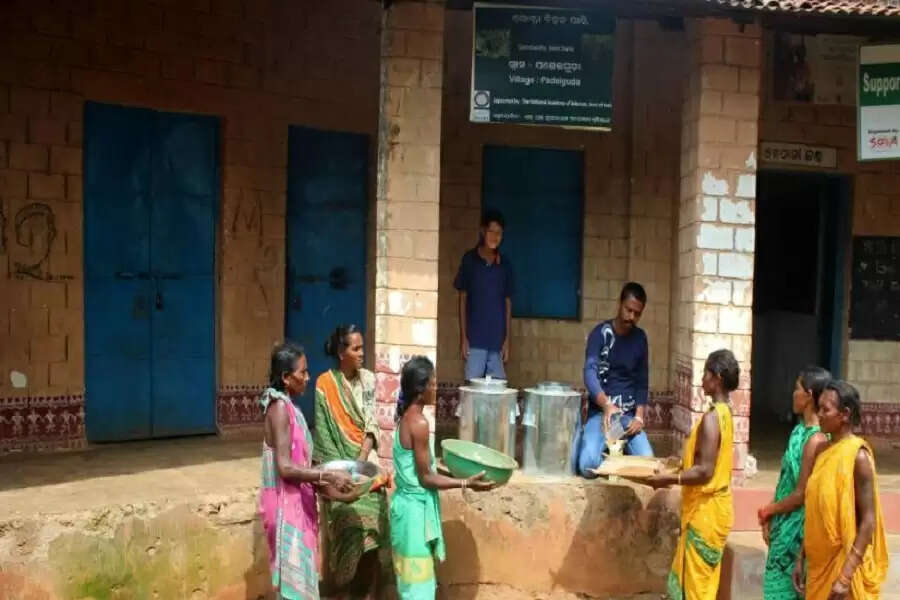 Kala Jeera rice cultivation and its marketing through an e-commerce platform bring better income and social status to women farmers, while also ensuring storage of good quality seeds for future needsKoraput, Odisha: Odisha’s near-extinct Kala Jeera rice is making a comeback, thanks to the tribal women who are cultivating and marketing it to the outside world from Machhara village in Koraput district with the help of MS Swaminathan Research Foundation (MSSRF), Jeypore, and Odisha Rural Development and Marketing Society (ORMAS).
Kala Jeera rice cultivation and its marketing through an e-commerce platform bring better income and social status to women farmers, while also ensuring storage of good quality seeds for future needsKoraput, Odisha: Odisha’s near-extinct Kala Jeera rice is making a comeback, thanks to the tribal women who are cultivating and marketing it to the outside world from Machhara village in Koraput district with the help of MS Swaminathan Research Foundation (MSSRF), Jeypore, and Odisha Rural Development and Marketing Society (ORMAS).A traditional variety with a distinct aroma and nutty taste, Kala Jeera rice grains resemble cumin seeds. It has medicinal properties that help increase haemoglobin levels.
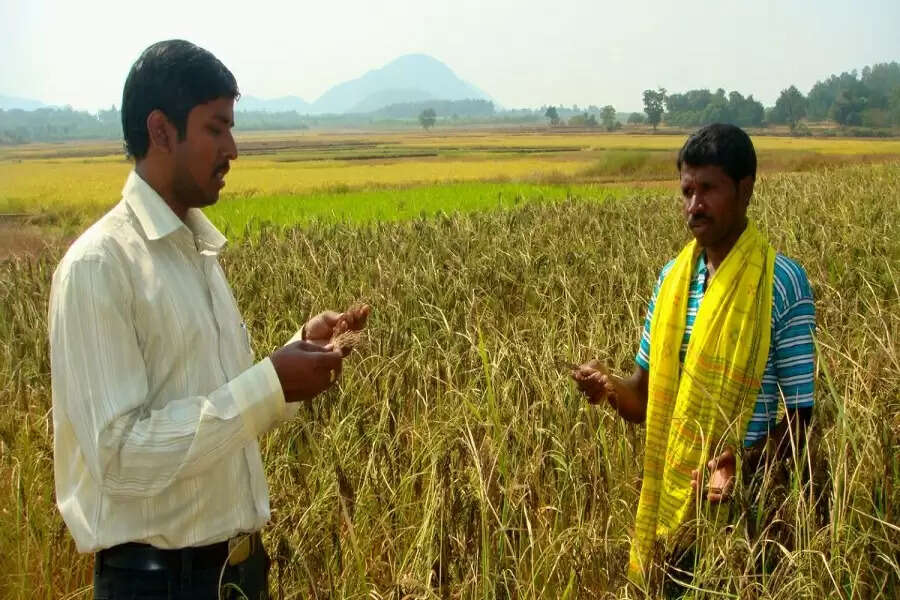
Researchers at the MSSRF trained the villagers of Koraput district to enhance productivity of Kala Jeera, an indigenous rice variety (Photo: Prativa Ghosh) .jpg)
Researchers had warned that Kala Jeera rice would gradually vanish in 12 years, but the village women brought about the much-needed change. In fact, Kala Jeera seeds sowed by them also reaped them the fruits of financial freedom.
Eight years on, over 100 women farmers in Machhara and nearby villages are involved in Kala Jeera rice production. They have formed a collective — Sabari Producer Group — which not only cultivates the rice, but also collects, processes, brands and sells the rice on e-commerce platform Amazon.
Apart from Machhara, the group purchases Kala Jeera from farmers in over 10 nearby villages, including Mandia, Bajra, Suan, Dangarrani, Sukriguda, Bodapadar, Podeiguda and Mendhaguda.
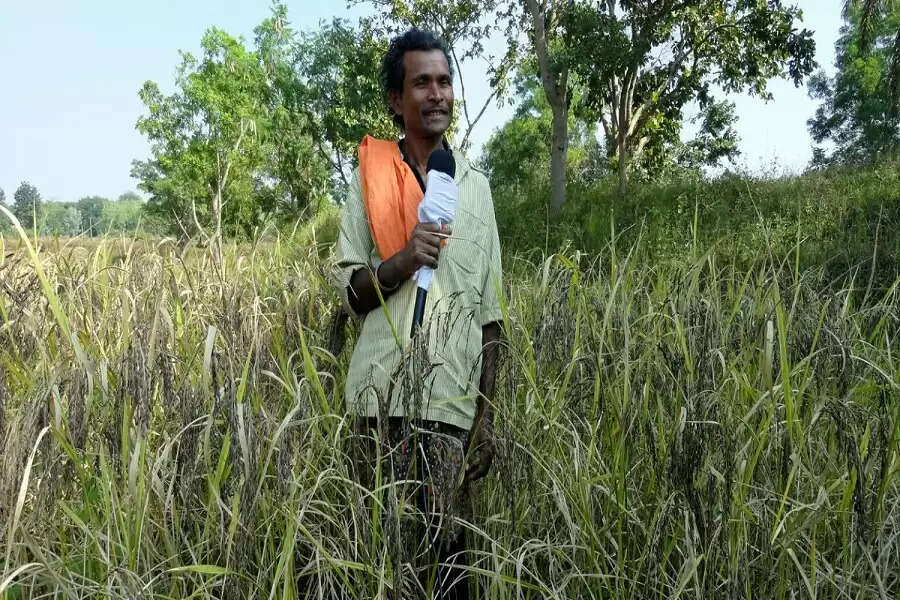
Koraput is a part of the poverty-stricken Kalahandi-Balangir-Koraput (KPK) region, where farmers cultivated mandi, kangu, suan and some rice for their basic needs (Photo: Prativa Ghosh) “Most people in our village belong to Poraja, Godaba and Bhumiyan communities. Traditionally, we cultivate rice to feed our families. We also worked under the MGNREGA scheme. Even then, we could barely manage to keep ourselves alive,” Machhara-based Chitta Chendia, who now has three acres under Kala Jeera rice cultivation, tells 101Reporters.
She says adopting Kala Jeera variety has enhanced her source of income as it is priced at Rs 25 to 30 per kg in the market against the Rs 15 of a basic paddy variety. “If you cultivate basic paddy on three acres, you get Rs 50,000 to 70,000 per harvest cycle (once a year); for Kala Jeera rice covering the same area, you get around Rs 2 lakh per cycle,” she elaborates, adding how she earns enough to send children to school now.
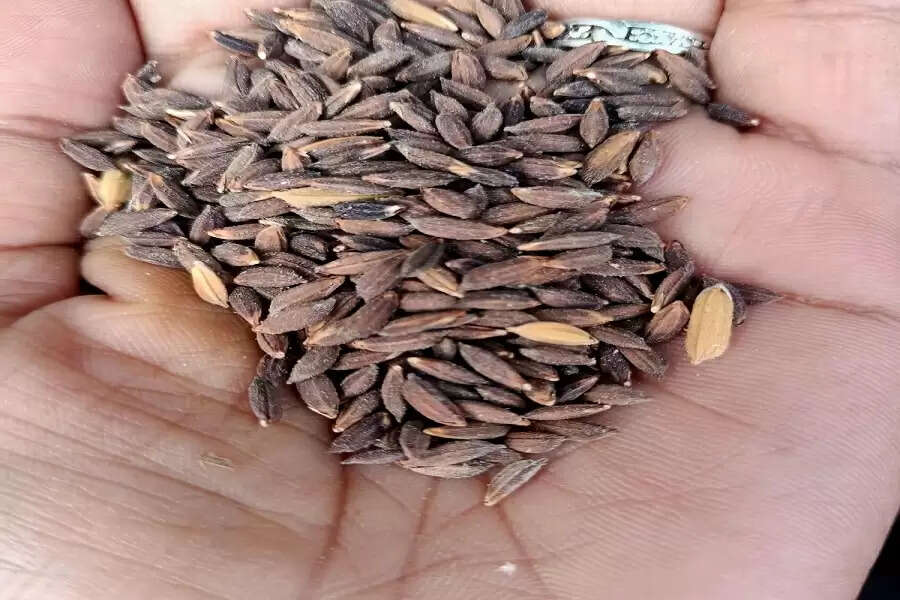
From sowing seeds to packaging the rice, involves a community of over 200 women from rural parts of Koraput, Odisha (Photo: Prativa Ghosh) .jpg)
According to Daimati Chendy, not everyone was involved in farming Kala Jeera initially. But on realising the demand for the product in Amazon, many women joined the initiative. From just 30, the number of cultivators has grown to over 100 in the last eight years. “Even landless women now take up cultivation in plots on lease,” Chendy says.
Sita Jani of Machhara expanded her Kala Jeera cultivation by getting another plot on lease, apart from utilising her small piece of land. Seeds are available easily and at affordable prices, and there is no struggle to sell the produce either, she says.
“Due to our successful enterprise, the women of our village are seen differently now. We got opportunities to visit big cities and talk to people as equals. Even men respect us more and want to help us so that we can bring in more money home,” says Haribola Sukia.
Initial days of struggle
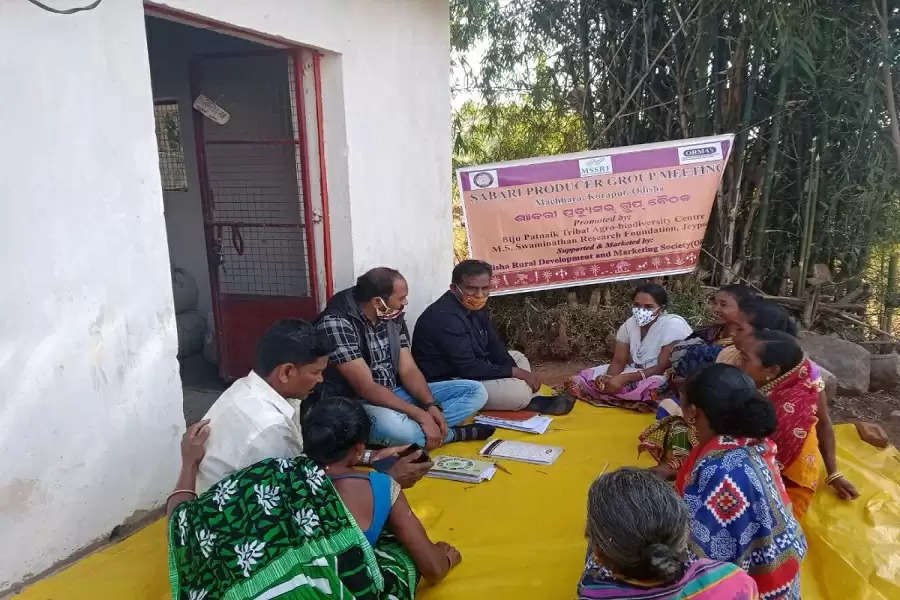
The traditional knowledge of tribal community was utilised to procure and increase the yield of Kala Jeera variety of rice (Photo: Prativa Ghosh) 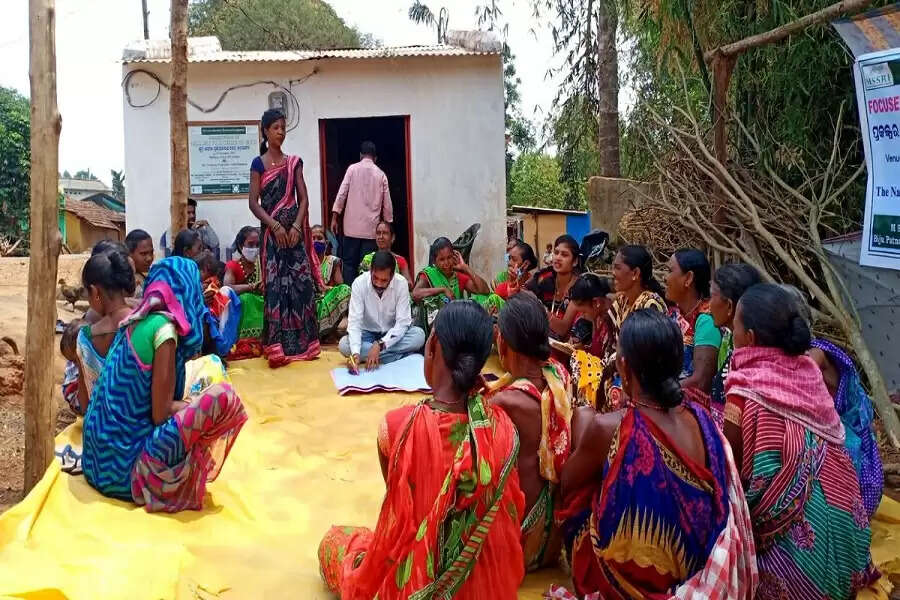
A special committee has been constituted to oversee the seed banks, used to store indigenous seeds of Kala Jeera rice (Photo: Prativa Ghosh) 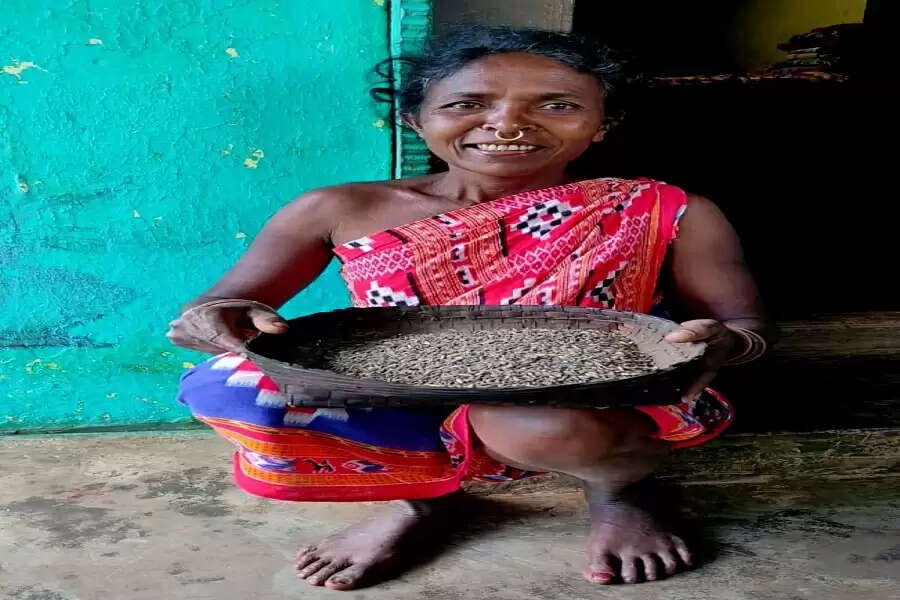
(Photo: Prativa Ghosh) A senior scientist at Watershed Support Services and Activities Network (WASSAN), Sushant Choudhary remembers how difficult it was in the initial days of the project to convince farmers to cultivate Kala Jeera commercially.
“Koraput is a part of the poverty-stricken Kalahandi-Balangir-Koraput (KPK) region, where women cultivated mandi, kangu, suan and some rice for their basic needs. Yet, they were finding it difficult to meet their daily food requirements,” says Choudhary, who has been working for Kala Jeera conservation since 2010.
Seed conservation, genetic enhancement and gainful utilisation of limited resources demanded serious attention to make Kala Jeera appealing to the farmers. As a follow-up, the MSSRF team and some tribal farmers surveyed the plots under Kala Jeera cultivation and identified low yield as one of the major concerns. Non-availability of both quality seeds and financial support for cultivation was another key issue.
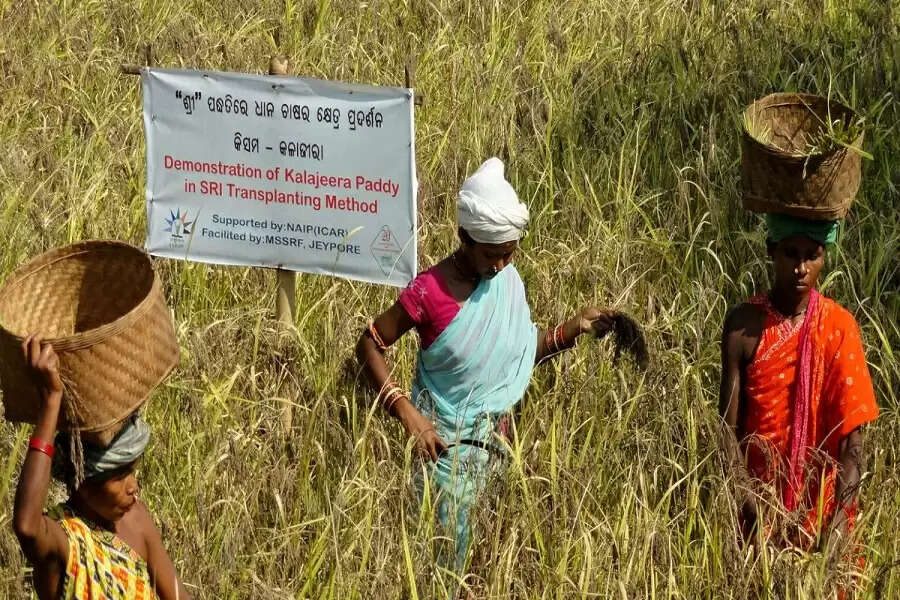
Researchers had warned that Kala Jeera rice would gradually vanish in 12 years, but the village women brought about the much-needed change, which provided them financial freedom (Photo: Prativa Ghosh) The MSSRF also found that Kala Jeera farmers were vulnerable to exploitation by moneylenders as they could not repay loans due to poor returns from the crop. The MSSRF started training farmers to safely store seeds in village seed banks and exhorted them to sell only rice, not seeds.
The ORMAS also supported women farmers in a big way. “We are working in Machhara, Kotpad, Borigumma and Kundra, all of which have one producer group each. Every year, we procure over 10 metric tonnes of Kala Jeera rice for supply, earning over Rs 14 lakh. This whole process employs around 200 women,” ORMAS Deputy Chief Executive Officer Roshan Kartik tells 101Reporters.
Seed banks make a difference
“Nearly 57% of the total cropped area in Odisha is drought-prone. So, drought-tolerance in crops is crucial for maintaining a stable yield, especially in a rainfed ecosystem. Koraput district is drought-prone, which is why cultivating indigenous drought tolerant species like Kala Jeera rice benefits all,” say Kartik Lenka, an MSSRF senior scientist, and Debabrata Panda, assistant professor, Biodiversity and Conservation of Natural Resources Department, Koraput Central University, in a research paper.
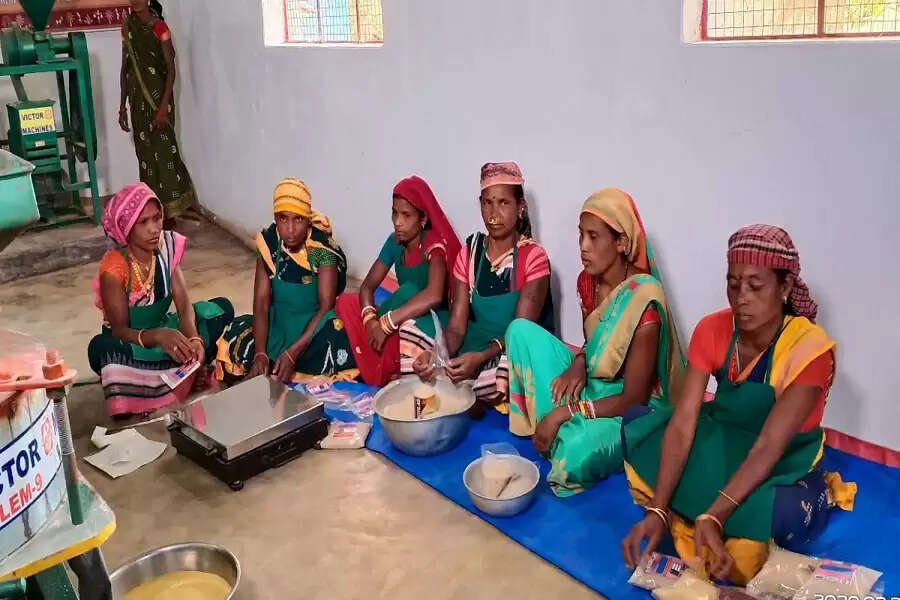
Due to a successful enterprise, women have also achieved a social upliftment in their village (Photo: Prativa Ghosh) 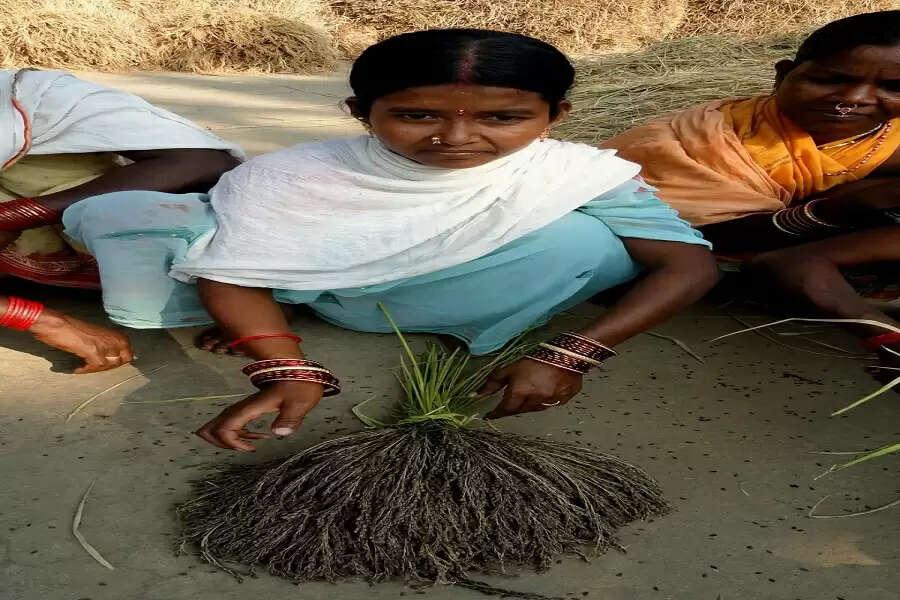
(Photo: Prativa Ghosh) Traditional farming practices are employed in Kala Jeera cultivation, which is fully organic. “Instead of chemical fertilisers, we make organic manure on our own using readily available components such as cow urine and leaves of neem, papaya and pomegranate, among others,” explains Jani.
Additionally, the researchers at the MSSRF have trained the villagers of Koraput district to enhance productivity while staying true to traditional methods. “Using our traditional knowledge, we could grow three quintals of Kala Jeera rice in an acre. After training, we now harvest 10 to 15 quintals from the same land,” she says.
According to Surajita Turuk, the MSSRF field officer and officer-in-charge of Machhara village, traditional fertilisers and seed purification method used by tribals for generations are the easiest ways to ensure organic farming. “We have branded them as Jibamruta and Bijamruta.”
“Seeds for the seed bank are collected from relatives and surrounding villagers, and then distributed among beneficiary farmers. We have a special committee for the seed bank,” Haribola Pitia explains.
Anyone who gets seeds from the bank has to return more seeds than they have taken. This is the rule, though it varies from village to village. “In Machhara, if someone takes 10 kg of seed, she has to return 12 to 13 kg. In Kundra, you have to return 14 kg for every 10 kg taken,” informs Pitia.
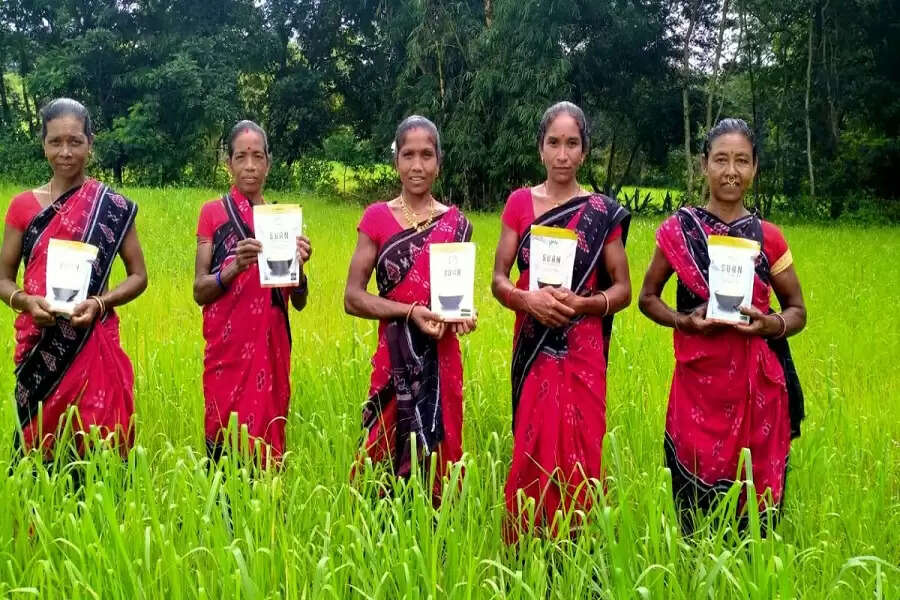
Over 100 women have formed a collective — Sabari Producer Group — which not only cultivates the rice, but also collects, processes, brands and sells the rice on e-commerce platform Amazon (Photo: Prativa Ghosh) Before the sowing season, villagers get together to identify good quality seeds and decide on the quantity to be distributed in each area.They will also reach an understanding on how to collect the seeds back from the beneficiary.
Due to these efforts, Koraput district today stands as a fine example of community participation for biodiversity conservation.
Edited by Tanya Shrivastava
The cover image is of women part of the Kala Jeera initiative in Koraput district, Odisha, captured by Prativa Ghosh.
(The author is a freelance journalist and a member of 101Reporters, a pan-India network of grassroots reporters.)
